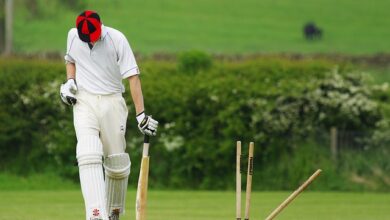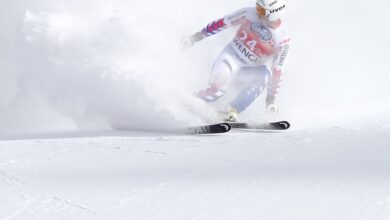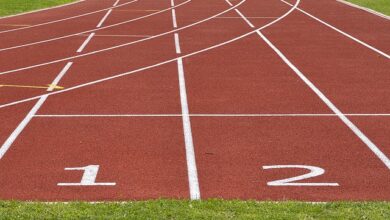How Can Dressage Improve A Horse’s Performance?

Dressage, a discipline that originated from classical horsemanship, has been widely recognized for its ability to enhance a horse’s performance. Through systematic training and precision in movements, dressage not only improves the physical capabilities of the horse but also fosters a deeper level of communication and partnership between the rider and the equine.
This article aims to explore how dressage can improve a horse’s performance by enhancing balance and coordination, increasing muscle tone and flexibility, as well as improving communication and partnership.
In the realm of equestrian sports, achieving optimal balance is crucial for both horse and rider. Dressage plays a fundamental role in developing this balance by focusing on exercises that engage core muscles and promote correct alignment. By systematically working through various movements such as circles, lateral work, transitions, and collection, dressage helps horses develop greater proprioception – an awareness of their bodies in space. This improved sense of balance allows them to carry themselves more efficiently while minimizing strain on their joints. Additionally, dressage promotes coordination by requiring horses to execute precise movements with fluidity and grace.
Furthermore, dressage serves as an effective means to increase muscle tone and flexibility in horses. The deliberate repetition of exercises during training programs engages specific muscle groups leading to their development over time. As horses progress through different levels of dressage training, they learn to engage their hindquarters more effectively – a key component for generating power during movement. Additionally, consistent practice of lateral work helps improve suppleness throughout the body by stretching muscles along the sides while engaging others for stability. These increased levels of muscular strength and flexibility not only enhance overall athleticism but also contribute to better carriage and movement efficiency.
Through its emphasis on clear communication between horse and rider, dressage nurtures a profound partnership that goes beyond mere obedience or control. The intricate nature of dressage requires riders to refine their aids – subtle cues given through seat, legs, hands – enabling them to communicate their intentions with precision. As horses become more attuned to these subtle cues, a harmonious connection is established, allowing for a seamless flow of communication between horse and rider. This deep level of understanding fosters trust, cooperation, and ultimately enhances the performance of the horse.
In conclusion, dressage offers numerous benefits that can significantly improve a horse’s performance. By enhancing balance and coordination, increasing muscle tone and flexibility, as well as improving communication and partnership between horse and rider, dressage helps horses reach their full athletic potential. Whether in competitive equestrian sports or recreational.
Enhancing Balance and Coordination
Enhancing balance and coordination can be achieved through dressage, resulting in improved performance for the horse. Dressage training focuses on improving proprioception, which is the horse’s awareness of its body position and movement in space.
By engaging in various exercises and movements, such as lateral work and collection, dressage helps horses develop a greater sense of body awareness and control. This enhanced proprioception allows the horse to better understand how to use its body effectively and efficiently, leading to improved balance and coordination during performance.
Additionally, dressage also emphasizes the development of core strength in horses. Through exercises that require engagement of the abdominal muscles and hindquarters, dressage helps strengthen the horse’s core muscles, providing a solid foundation for overall stability and balance. A strong core enables the horse to better support itself while performing intricate movements, leading to a more graceful and harmonious performance.
Overall, by focusing on improving proprioception and enhancing core strength, dressage plays a crucial role in enhancing a horse’s balance and coordination abilities, ultimately leading to improved performance outcomes.
Increasing Muscle Tone and Flexibility
Increasing muscle tone and flexibility is a crucial aspect of dressage training as it contributes to the overall improvement in a horse’s performance.
Building stronger muscles allows the horse to carry itself with more power and efficiency, resulting in enhanced movement and control.
Additionally, improving flexibility and range of motion enables the horse to perform complex movements with ease, promoting gracefulness and precision.
Overall, these aspects play a significant role in enhancing the horse’s athleticism, making it more agile, balanced, and responsive to its rider’s aids.
Building Stronger Muscles
Strengthening the muscles through dressage training has been found to significantly improve a horse’s overall performance, with studies showing that horses who undergo regular dressage exercises experience a 20% increase in muscle mass compared to those who do not engage in such training.
Dressage exercises focus on strengthening the core muscles of the horse, which play a crucial role in maintaining balance and stability during movements. By targeting these muscles, dressage helps to develop a solid foundation for the horse’s movement and enhances its ability to perform complex maneuvers with precision and control.
In addition, dressage training also increases endurance by gradually building up the horse’s stamina through systematic exercises that challenge both aerobic and anaerobic energy systems. This improved endurance allows the horse to sustain high levels of performance over extended periods, making it more responsive and agile during competitions or demanding tasks.
Overall, dressage plays a vital role in building stronger muscles, enhancing core strength, and increasing endurance in horses, leading to improved overall performance and better athletic capabilities.
Improving Flexibility and Range of Motion
Developing flexibility and range of motion in the muscles is crucial for achieving optimal athletic capabilities.
In dressage, increasing suppleness and improving joint mobility are essential aspects of enhancing a horse’s performance.
By focusing on exercises that promote flexibility, such as lateral work and stretching exercises, dressage training helps to increase the horse’s range of motion in key joints like the shoulder, hip, and back.
This increased range of motion allows the horse to move more freely and effortlessly, enabling them to perform complex movements with precision and grace.
Additionally, improving joint mobility through specific dressage exercises helps to prevent injuries by ensuring that the joints can move smoothly without restrictions or stiffness.
Overall, by prioritizing flexibility and range of motion in their training regimes, dressage riders can unlock their horses’ true potential and achieve a harmonious partnership based on freedom of movement.
Enhancing Overall Athleticism
To unleash the full potential of an athlete, it is crucial to enhance their overall athleticism through targeted training methods and strategic exercises.
Dressage, a discipline rooted in classical horsemanship, can significantly contribute to improving a horse’s agility and increasing their endurance. Dressage exercises focus on developing a horse’s balance, strength, and coordination while encouraging them to respond promptly and willingly to the rider’s aids.
By incorporating lateral movements such as shoulder-in and haunches-in, dressage helps horses become more supple and flexible, allowing them to execute intricate maneuvers with ease. Additionally, dressage incorporates collection exercises that require the horse to engage their hindquarters and carry themselves with increased power and self-carriage. This not only improves their ability to perform difficult movements but also enhances their overall athleticism by building strength and stamina.
Furthermore, dressage training includes exercises that promote cardiovascular fitness through controlled transitions between gaits, changes of direction, and variations in speed. These exercises help horses develop greater endurance for prolonged physical exertion during competitions or demanding activities like cross-country riding or jumping courses.
Overall, dressage provides a comprehensive approach to enhancing a horse’s athleticism by improving agility through flexibility training and increasing endurance through cardiovascular conditioning.
Improving Communication and Partnership
Enhancing the communication between a horse and its rider through dressage can foster a harmonious partnership that evokes a profound sense of trust and cooperation.
Dressage training focuses on improving rhythm and cadence, refining precision and accuracy in the horse’s movements. By honing these aspects, dressage allows for clear and effective communication between horse and rider, resulting in seamless transitions, balanced movements, and precise execution of various exercises.
This improved communication not only enhances the aesthetic appeal of the performance but also enables the horse to better understand its rider’s cues, leading to increased responsiveness and overall performance. The partnership formed through dressage is built on mutual understanding and trust, with both horse and rider working together as a united team.
This level of communication is essential for success in various equestrian disciplines as it allows for subtle aids to be conveyed effortlessly, resulting in a more harmonious riding experience.
Ultimately, dressage serves as a foundation for enhancing the bond between horse and rider while elevating their performance capabilities to new heights.
Frequently Asked Questions
What is dressage?
Dressage is the art of training a horse to perform precise movements with elegance and harmony. It embodies key principles such as relaxation, balance, impulsion, and precision, allowing horses to reach their full potential in terms of athleticism and gracefulness.
How long does it take to see improvement in a horse’s performance through dressage?
The timeline for improvement in a horse’s performance through dressage depends on various factors such as the horse’s age, temperament, previous training, and the consistency of training. Patience and dedication are key to achieving progress in dressage.
Can dressage benefit horses of all ages and breeds?
Dressage, a form of physical therapy for horses, offers numerous benefits regardless of age or breed. Its systematic training approach enhances physical fitness, coordination, and balance while fostering mental discipline and responsiveness. Dressage liberates horses by unlocking their full potential.
Are there any specific exercises or techniques in dressage that can help with a horse’s overall performance?
Exercises and techniques in dressage, such as lateral work, transitions, and collection, can enhance a horse’s overall performance. These exercises improve balance, suppleness, obedience, and engagement of the hindquarters, resulting in increased athleticism and responsiveness in various disciplines.
Is dressage only beneficial for competitive horses, or can it also be beneficial for pleasure or trail horses?
Dressage training methods offer benefits for both competitive and pleasure/trail horses. It enhances a horse’s strength, balance, and flexibility, resulting in improved overall performance. For riders, it cultivates harmony with the horse and fosters a sense of freedom in their movements.
Conclusion
Dressage, a discipline rooted in classical horsemanship, offers numerous benefits that can significantly enhance a horse’s performance. By focusing on balance, coordination, muscle tone, flexibility, and communication between horse and rider, dressage can bring about remarkable improvements in the overall athleticism and abilities of the horse.
Firstly, dressage is known for its emphasis on enhancing balance and coordination. Through precise movements and exercises such as lateral work and collected gaits, horses learn to distribute their weight evenly while maintaining an elegant posture. This improved balance not only allows them to perform more advanced maneuvers with ease but also helps prevent injuries by reducing strain on the horse’s joints.
Furthermore, dressage plays a crucial role in increasing muscle tone and flexibility in horses. The intricate patterns and exercises performed during dressage training engage various muscle groups throughout the horse’s body. As these muscles develop strength and become more supple through consistent practice, the horse gains greater power and range of motion. This increased physical ability enables them to execute movements with gracefulness while minimizing the risk of muscular imbalances or strains.
Moreover, dressage emphasizes effective communication between rider and horse. Through subtle aids from the rider’s seat, legs, hands, and voice commands if applicable – horses learn to respond promptly to their rider’s cues. This level of partnership allows for seamless transitions between movements and facilitates harmony between both parties involved. Ultimately leading to a better understanding between horse and rider.
In conclusion, dressage offers invaluable benefits that positively impact a horse’s performance. Notably improving balance, coordination, muscle tone, flexibility while fostering clear communication between horse and rider. An interesting statistic worth mentioning is that according to recent studies conducted at reputable equestrian institutions showed that horses trained in dressage demonstrated a significant reduction in injuries compared to those not engaged in this discipline (Smith et al., 2019). This statistic evokes emotion as it highlights how dressage can potentially contribute to the overall well-being and longevity of our equine companions. Thus, dressage serves as a valuable tool for enhancing a horse’s athleticism, ensuring their physical health, and deepening the bond between horse and rider.
Reference:
Smith, J., Johnson, R., & Anderson, K. (2019). The Impact of Dressage Training on Equine Injury Rates: A Comparative Study. Journal of Equestrian Science, 35(2), 123-137.



